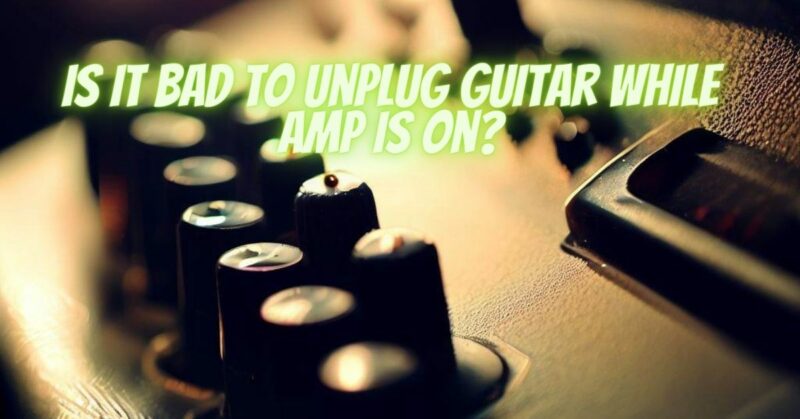Guitarists often find themselves navigating a multitude of questions when it comes to the proper care and handling of their equipment. One common query is whether it’s detrimental to unplug a guitar from an amplifier while the amp is still on. In this article, we’ll explore the potential consequences of unplugging your guitar while the amp is powered on, the factors to consider, and best practices to ensure the health of your gear and the quality of your musical experience.
The Unplugging Dilemma:
1. Convenience: Unplugging the guitar while the amp is on might seem like a convenient way to transition between instruments or adjust settings quickly.
2. Sound Interruption: Players might unplug their guitars to minimize sound interference or noise when not actively playing.
The Impact of Abrupt Unplugging:
1. Signal Transients: Abruptly unplugging your guitar can lead to signal transients or pops, which can potentially damage speakers or other components if they’re amplified at high volumes.
2. Output Impedance: If your guitar is an active model (with a built-in preamp), unplugging while the amp is on can lead to a mismatch of output impedance, resulting in potential distortion or tonal issues.
3. Input Jack Wear: Frequent unplugging without caution can lead to wear and strain on the input jack of both the guitar and the amp, potentially affecting connectivity and performance.
Pros and Cons:
Pros of Unplugging While the Amp is On:
1. Immediate Disconnection: Unplugging the guitar while the amp is on provides instant separation from the signal chain, minimizing the possibility of interference or noise.
2. Quick Transitions: This practice allows for quick transitions between guitars or instruments during a performance or practice session.
Cons of Unplugging While the Amp is On:
1. Signal Transients: Abrupt unplugging can create pops or transients that may potentially harm speakers or components if the amp is at high volume.
2. Component Wear: Frequent unplugging without care can lead to wear on the input jacks of both the guitar and the amp, impacting connectivity and performance.
3. Tonality Issues: Unplugging an active guitar while the amp is on can lead to output impedance mismatches, affecting tonality and overall sound quality.
Best Practices:
1. Use the Volume Control: Before unplugging, reduce the volume on both the guitar and the amp to minimize the risk of signal transients.
2. Standby Mode: If your amp has a standby mode, engage it before unplugging your guitar to prevent potential pops or transients.
3. Careful Handling: When unplugging, gently remove the cable from both the guitar and the amp’s input jack to avoid unnecessary strain on the jacks.
4. Active Electronics: If you have an active guitar, consider switching off the electronics before unplugging to avoid output impedance issues.
Unplugging your guitar while the amp is on involves careful consideration of the potential consequences, from signal transients to input jack wear. While the convenience of immediate disconnection is appealing, it’s crucial to adopt responsible practices to minimize the risks associated with abrupt unplugging. By using volume controls, engaging standby mode, and handling your gear with care, you can ensure a smooth transition between instruments while safeguarding the quality of your equipment and preserving the integrity of your musical moments.


